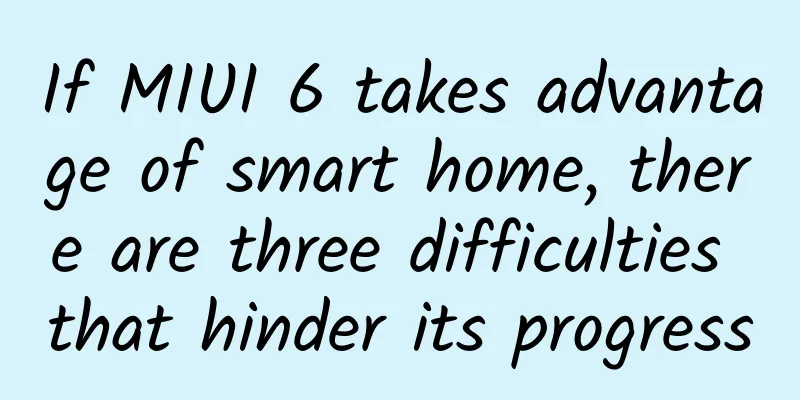Why do we put mosaics on the eyes?

|
Since its invention, mosaic has brought great convenience (or inconvenience) to our lives. It can be said that everyone, from the age of 99 to the youngest, from a financial expert on Wall Street in New York to a native African, has seen mosaics. Mosaics are used so widely. I wonder if you have ever noticed where mosaics are often used? Copyright image, no permission to reprint If you think about it carefully, you will find that mosaics are basically placed in two places:
Eyes are the key features of the face Our face has several structures, from top to bottom they are the forehead, eyes, nose, lips and face. Among these structures, the eyes are the most critical feature, because the eyes themselves are changeable, not only the pupil color is different, but also the shape of the eyes, and the most important thing is the expression of the eyes. Just like what people say, "I'll give you a look and you can experience it yourself", the movement of the eyes can convey many thoughts of the human body, such as joy and sadness, as well as command information, so some people say that the eyes are the windows to the soul [1]. Eye size remains relatively constant I believe you must have a deep memory of the big eyes of children, right? However, as we age, our eyes seem to get smaller and smaller. If we still have "a pair of beautiful big eyes" when we grow up, it would be a great appearance advantage. However, this observation is actually wrong. Because the eyes are a very strange organ in our human body, that is, their size changes little. The eyeball of a baby is 16 mm-17 mm, and the eyeball of an adult is only 22.5 mm-23 mm. Moreover, after the age of 13, the eyeball is fully developed and remains unchanged, with a change of only about one-third. In contrast, other parts of our body, such as height, increase several times from infant to adult. Therefore, children's eyes appear particularly large relative to their small bodies, and small relative to adults' eyes [2]. It is precisely because eyes have obvious diverse information and can maintain relative stability that people choose to use eyes as a criterion when judging others. Once the eyes are covered, it is difficult for us to recognize the person, which is also the reason why mosaics are placed on the eyes. Of course, the same principle applies to those celebrities who wear sunglasses when they go out. With their eyes covered, they are basically unrecognizable except for their die-hard fans. Copyright image, no permission to reprint I believe that after reading this, you basically understand why mosaics are used on the face, right? Is Mosaic related to iris recognition? However, some curious kids will definitely think of another important content, which is iris recognition. In various movies and TV dramas, we often see people putting their eyes close to a device before they can turn on a switch or unlock related equipment. This is iris recognition. What is iris recognition? Copyright image, no permission to reprint The appearance of a human eye is composed of three parts: the sclera, the iris, and the pupil . The iris is a circular area between the sclera and the pupil, accounting for about 65% of the total area of the eye. The iris contains a wealth of biological characteristic information, and after being fixed in childhood, it remains unchanged throughout life. It can be said to be a person's lifelong ID card [3]. Because of this, the iris is used as one of the important indicators of human biometrics. Compared with DNA identification, which has high sampling difficulty and slow identification, iris recognition has many advantages such as speed and accuracy, and has become an important means of individual identification. So, is Mosaic related to iris recognition? The answer is no . We can use a simple example to disprove this point, that is, if a person closes his eyes, can we recognize him? The answer is yes. For example, a movie or TV star, even if he closes his eyes, I believe most people who follow the show can recognize this person. But if the celebrity's eyes are blurred, it will be difficult to recognize them. It can be seen from this that human recognition of faces relies more on information from the eyes rather than the contents of the eyeballs. Having said that, let’s make a brief summary: The mosaic is placed on the eyes because the eyes are an important part of the face that can distinguish people. Blurring this part will make it difficult for people to recognize each other. However, this recognition is mainly based on the overall part of the eyes, not the eyeballs. Of course, it must be pointed out that this recognition refers to people's recognition of others. If it is replaced by a machine, it is another matter. After all, for a machine, judging a person's eyes is an important step. Once a person closes his eyes, the machine will be easily blinded. References: 1. Dang Deyu, Wu Haibin, Wang Runhui. An eye location algorithm for face recognition[J]. Computer Applications and Software, 2005(12):115-117. 2. Cunningham, edited by Paul Riordan-Eva, Emmett T. (2011-05-17). Vaughan & Asbury's General Ophthalmology (18th ed.). New York: McGraw-Hill Medical. 3. Li Jin, Li Shengguang, Zhou Qianli. Research on database construction for large-scale application of police iris recognition[J]. Journal of Chinese People's Public Security University (Natural Science Edition), 2018, 24(02): 57-62. This article is produced by Science Popularization China, produced by Li Lei, and supervised by the Computer Network Information Center of the Chinese Academy of Sciences The cover image of this article is from the copyright gallery, and the image content is not authorized for reproduction |
Recommend
Will the mobile phone manufacturers’ launch of customized VR glasses be a hit?
Recently, there have been reports that Apple has ...
Content is king, but platform and environment are God!
We live in an age where it seems like media compa...
How do the sheep in the Sheep Village control the Big Gray Wolf? It is recommended to learn from the bugs
Kind tips: This article contains a lot of cute an...
There is no doubt that iPhone X will stir up a wave of facial recognition in the market
Compared to the uninspired iPhone 8, the iPhone X...
Planning activities: four efficient promotion methods
Today's article would like to share with you ...
"Black Myth: Wukong" is a huge hit. Apart from taking advantage of the popularity, do domestic car manufacturers have any other ideas?
Sales of nearly 10 million in three days! The fil...
The "chip shortage" problem continues to spread, and the annual automobile production in 2021 may decrease by 4.5 million vehicles
Recently, market research firm Bernstein Research...
Tesla CFO is leaving, former CFO Ahuja to take over
Tesla Chief Financial Officer Jason Wheeler is le...
It has appeared in many places in Hangzhou! A large number of netizens took photos of it: there are as many as 6,000 parasites, which can be fatal in severe cases!
recently, Ms. Yu, who lives in Renhe Jiulong Vill...
Fan Gongzi's "Takeaway Method 3.0" Love Secrets Course
A way to fall in love without dating, just chat o...
PS4 Chinese version of "Tearaway: Unpacking": Creative and rich handle features show new fun
At the end of this year when many console blockbu...
Does eating earwax really make you dumb? Many people have been scared since childhood, but the truth is...
Expert of this article: Zhao Liheng, deputy chief...
Military Advisor Mansion Ziwei Doushu Elementary and Intermediate Class (Audio Course)
Military Advisor Mansion Ziwei Doushu Elementary ...
What are the functions of WeChat Beauty Mini Program? How much does it cost to develop a skin care product mini program?
The most profitable industry nowadays is the &quo...









